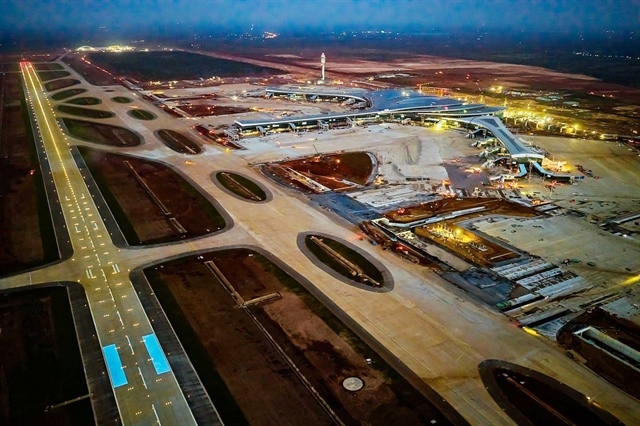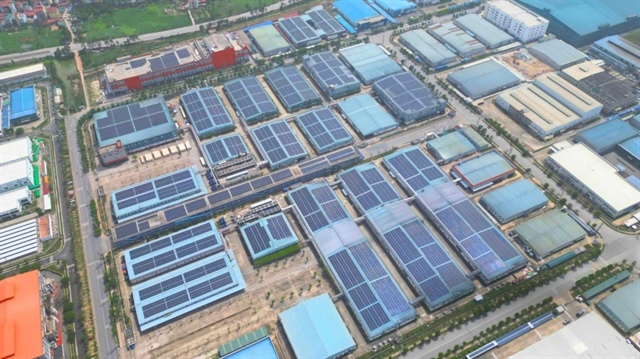Questions over capacity of power grid and PPAs
Questions over capacity of power grid and PPAs
Despite international and domestic investment increasing in the renewable energy sector, unease remains over the capacity of the nation’s power grid. While the Vietnamese government has moved quickly to diversify its energy sources, gird expansion and infastructure has been slower to develop.
Over the past few years, although there has been a climb in investment in renewable energy, not only authorised agencies, but investors have expressed their concern about the capacity of absorbing electricity of the national power grid.
Making an interesting comparison, Bui Van Thinh, chairman of Thuan Binh Wind Power JSC, said, “The issue about grid connection is just like that of My Dinh National Stadium in Hanoi. While the stadium can accommodate only 40,000 people, the demand for watching football matches is far higher than that. Thus, who will stand inside and who will stand outside the stadium? The same pressure is also facing the national power grid.”
Nguyen Minh Quang from the National Load Dispatch Centre under the Ministry of Industry and Trade (MoIT) said that the southern central region is home to the nation’s renewable energy, but power grid conditions there are not prepared for upcoming demands. “It takes three years, on average, to build a power grid project, while a solar power one needs only one year to be put in place. As a result, electric grid development cannot catch up with the proliferation of solar and wind power projects,” he said.
The lesson has been put down that these renewables need to be integrated into electricity grids that are capable of managing new complexities such as unpredictable and intermittent supply, more distributed power generation, demand management, and electric vehicles. Grid operators will also need to expand and modernise their infrastructure to ensure the reliability, efficiency, and security of electricity supplies.
Unlike wind power, solar power has become hotter than ever in Vietnam. The boom began when the government’s Decree No.11/2017/QD-TTg on mechanisms for encouraging the development of solar power in Vietnam was released. The list of solar projects registered by foreign investors in Vietnam has been growing rapidly, including foreign names such as Tata Power, Sunseap Group, ACWA Power, SY Panel Group, AIN Group, Siemens Gamesa Renewable Energy, and Gulf Energy Development.
Thuan Binh Wind Power JSC also plans to develop a 150 megawatt (MW) solar power plant on the area the company had initially intended to use to expand the Phu Lac wind farm. The construction of the project will be implemented in three phases. The company is currently conducting a pre-feasibility study, an environmental impact assessment, and capital arrangement for the first phase of the project.
The MoIT recently released impressive figures, approving more than 70 new projects to be put into operation before June 2019, with a total capacity of over 3,000MW. The amount far exceeds the estimated solar power output of 1,000MW until 2020 as set out in the original Power Development Planning VII (PDP VII).
Nhat Dinh, a renewable energy expert, said that on average, cities and provinces need to build a power plan with vision for 7-10 years ahead as well as arrange the grid for the new projects. In 2016, when the revised plan was issued, no investors registered to develop solar and wind power projects in the central region. However, in 2017, the government’s approval of the feed-in-tariff (FiT) of 9.35 US cents per kilowatt-hour (kWh) for solar power ushered in an intense wave of investment, leading to the current overload.
China’s renewable energy development policy could serve as a lesson for investors planning to pour money into renewables in Vietnam.
Specifically, the total installed wind power capacity of China is now estimated at 200 gigawatts (GW), while the figure in the US is 100GW. However, the generated wind power capacity in the US is higher than in China, showing that the generated wind capacity is very low. The reason for this problem is that numerous wind power projects are completed but fail to generate power because of grid insufficiencies, which is the consequence of a lack of synchronisation in wind power development.
In Vietnam, under the government’s Decision No.39/2018/QD-TTg, which came into force last November, the FiT rate for onshore wind power set at 8.5 US cents per kWh, and offshore wind power at 9.8 cents per kWh. Under the decision, these rates are applicable to projects that are partly or entirely connected to the power grid and will begin commercial operations by November 2021.
Vu Chi Mai, senior project officer for an up-scaling of wind power venture under the GIZ Energy Support Programme, noted that two factors influencing project bankability are the level of electricity selling price, and the power purchase agreement (PPA). In the past, when the previous FiT was low, the PPA was considered an important factor to evaluate a project’s bankability. Today as the FiT has been raised, the bankability shall be enhanced despite the unchanged PPA. The current PPA is seen as acceptable by local banks but not international banks. The question remains whether local banks have the capacity to fund a multitude of wind power projects.
In the long run, to achieve the government’s goals on renewable energy development, adjustments to the PPA should be considered to meet the requirements of international financial institutions. This will have a positive impact on the financing of wind power projects. Few studies thoroughly assess the impact of fluctuating renewables on the stability of the national grid.
However on avoiding specific bottlenecks, the Vietnam Energy Partnership Group’s (VEPG) said it requires “comprehensive monitoring of application, approvals and a transparent system of prioritising project applications as opposed to a first-come, first-served basis.”






















